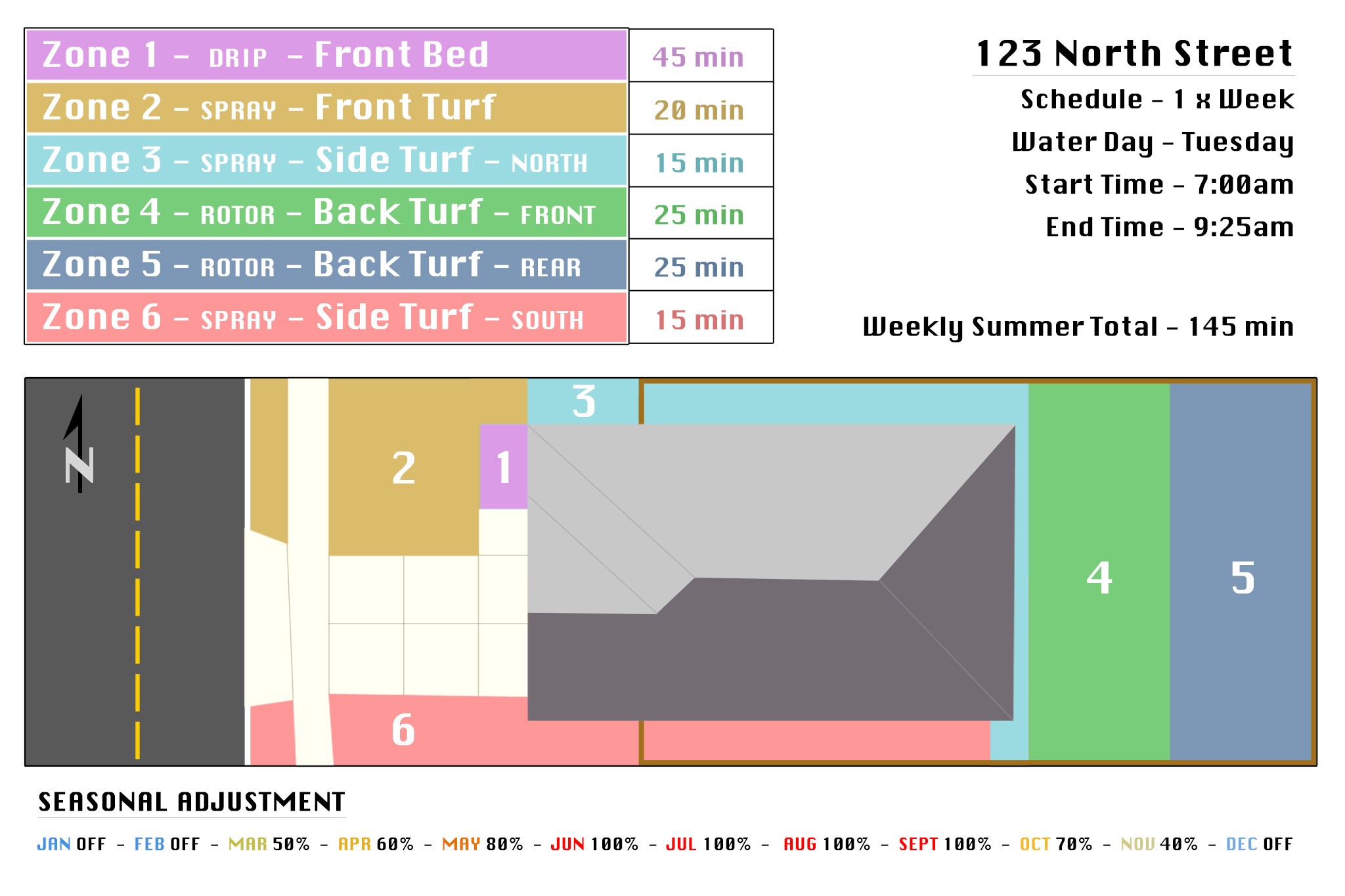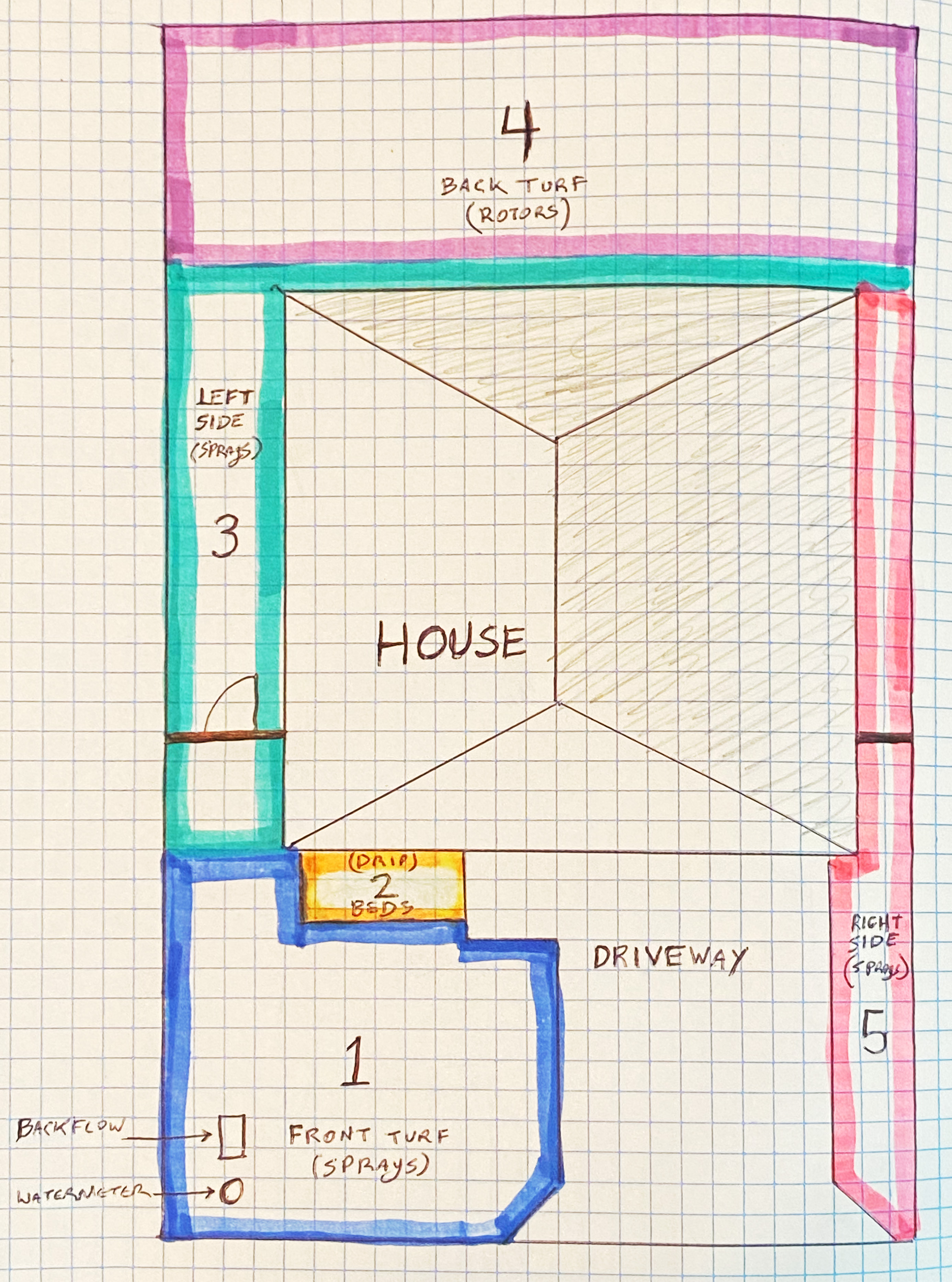Adding extra days to your irrigation system’s schedule won’t quench your landscape’s thirst. But it will soak your water bill.
Central and South Texas have been blessed with July rainfall. Of course, if we’re not careful this much-needed reprieve will be short-lived. So, what can we do?
Well, being wiser with our water usage is a great start! It’s always a good idea to identify which irrigation zones need additional water so you can adjust those zones as necessary. It also helps to know what zone waters what.
I recommend investing the time to learn a few basic functions of your irrigation controller. Also, create an irrigation zone map or written list of where each zone waters so you can make quick adjustments when needed.


Zone maps can be as simple or as complex as you’d like. Some people jot down a quick list identifying where each zone waters (zone 1-front yard, etc.). Others create detailed maps of their property sometimes indicating where each sprinkler head and valve cover is. Whichever option you choose is fine. The goal is to help you easily recognize which zone needs a run time adjustment.
To get started, refer to your irrigation controller’s manual when learning to program and run the system (most can be found in digital format with a quick web search of the make and model followed by manual). Once you’ve it out, start your system in manual mode and watch each zone run for a few minutes as you walk around the yard making notes of where it waters, or sketching a map of your property and associated irrigation zones.
Periodically going through your irrigation system in manual mode also allows you to check for and correct any problems like broken heads or coverage issues.
Once you’ve cycled through all zones and finished creating your zone map or list, attach a copy on the wall next to your irrigation controller for quick reference.


